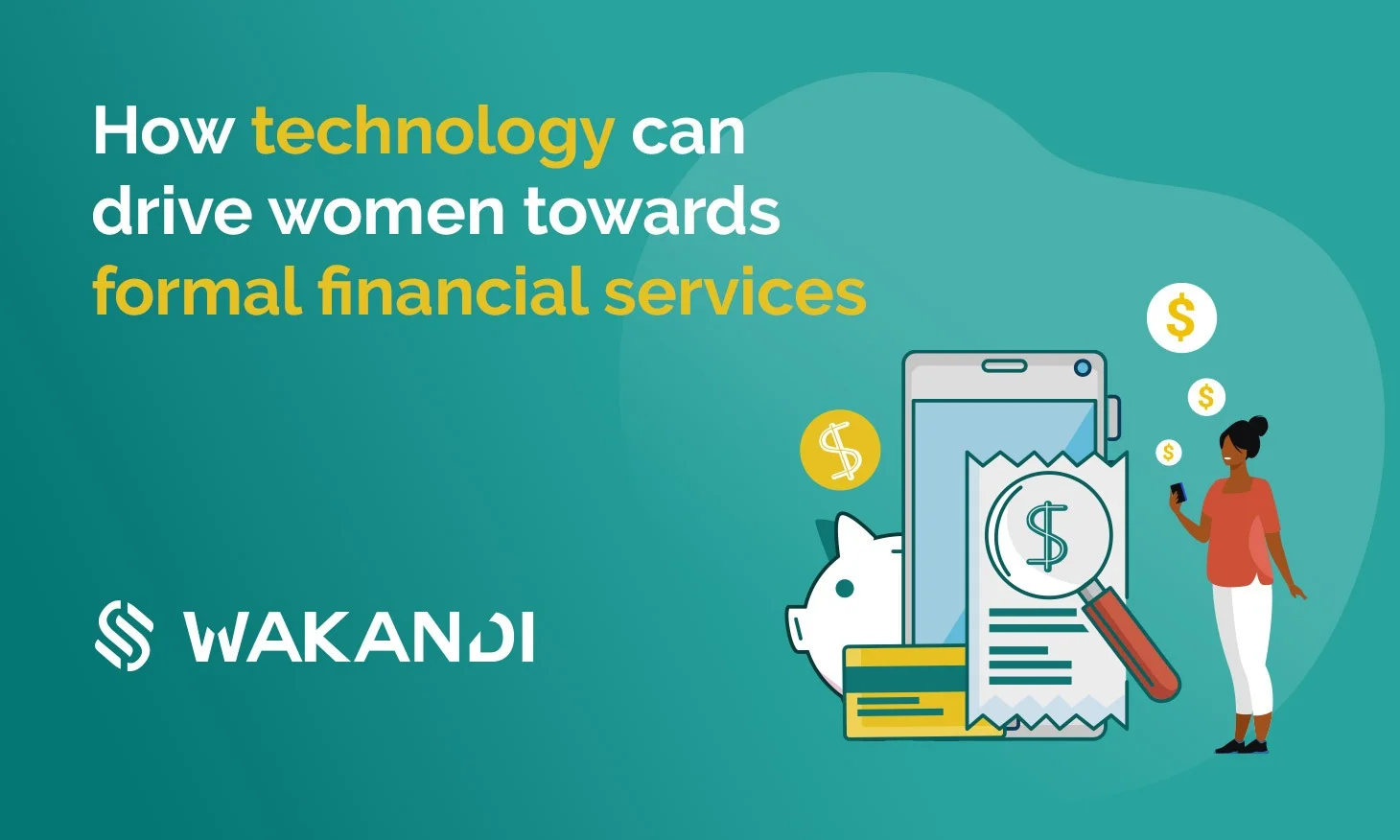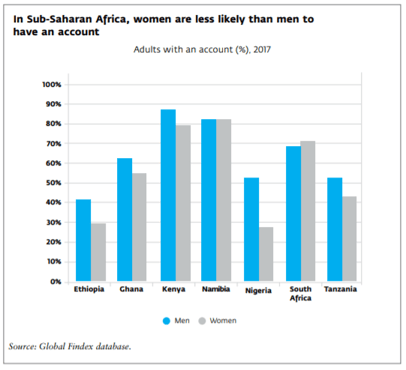How technology can drive women towards formal financial services

Financial inclusion happens when a person gets an account that he/she can use to store money and make transactions. In Sub-Saharan Africa, 48% of men have an account compared to only 37% of women. This difference shows the gender gap in financial inclusion in Africa. The gender gap varies across different countries in Sub-Saharan Africa.
According to the Global Findex 2017, in Nigeria, men are twice as likely to have an account than women. The gender gap is almost zero in Namibia, while women are more likely to have an account in South Africa.

“Nearly 190 million women have no account at a financial institution across Sub-Saharan Africa.”
– Global Findex
Challenges women face in Sub-Saharan Africa
Better financial inclusion is essential for the development and well-being of people. It is more critical for women as they largely remain financially excluded. Unbanked women in Sub-Saharan Africa face several challenges to get an account. Even if they bypass barriers of gender inequalities and lack of education, various issues hinder their financial inclusion.
- Many women feel that having an account can be very expensive due to the different charges involved. Banks levy several charges related to transactions and services.
- Banks in Sub-Saharan Africa are situated too far away from households, especially in rural areas. It creates a challenge for women as they need to travel long distances and spend almost entirely a day to get essential banking services.
- Women generally lack the necessary documents required to open an account. A long list of necessary documents for the KYC process plus time-consuming paperwork adds to the challenges of opening a bank account.
Technology for better financial inclusion
Technology and innovation have changed the way people handle their finances across the globe. The positive effects of mobile technology can be seen in various African countries such as Kenya, South Africa, Tanzania, and The Gambia. More people are ditching cash and adopting mobile money services to send or receive money online.
“Half the population in Sub-Saharan Africa will subscribe to mobile services by 2025.”
– GSMA
Not only mobile technology, but cryptocurrencies, digital tokens, stablecoins, and many other different technologies have started to transform the financial sector. How can technology help women in Africa access formal financial services?
Better accessibility to financial services
Technology can solve issues of far-off branches and mundane paperwork by enhancing the accessibility of financial services. Today, people can send or receive money online with a few clicks on their mobile devices. Apart from money transfer, people can now access many other services such as investment, insurance, and remittance through mobile.
Building digital footprints
Using digital systems can help create digital footprints for the unbanked population. This information can include daily transactions, account details, spend analysis, total savings, and more. With all the data, banks would be able to check the creditworthiness of their customers and offer financial services.
Creating a digital financial services ecosystem
Advanced usage of technology can help build a digital financial ecosystem for women in Africa. This ecosystem will comprise all financial services and connect with them for faster and better delivery of services. Imagine a world where a woman can save, transact, invest, mortgage, and do everything through her mobile phone.
We, at Wakandi, aim to use technology and digital systems to enable better financial inclusion in Africa. We also strive to boost formal financial services amongst societies that rely on informal savings groups to save their money. Read on to know how we are enabling such groups to improve women’s financial inclusion.
Moving forward
Digital technology can create new economic opportunities for women in Sub-Saharan Africa. However, the uptake of digital systems amongst women is essential to reap these opportunities. Governments, banks, and other institutions must take the necessary steps to ensure the vast adoption of technology. With combined efforts, we will see a positive change in women’s financial inclusion in Sub-Saharan Africa.

Comments